Abstract
Subchronic toxicities of ClO2, NaClO2, NaClO3 and NH2Cl were studied in the African Green monkeys (Cercopithecus aethiops). The chemicals were administered in drinking water during 30-60 days subchronic rising dose protocols. The only unexpected and significant toxic effect was elicited by ClO2; this chemical inhibited thyroid metabolism in the animals at a dose of ca. 9.0 mg/kg/day. A statistically significant decrease of serum thyroxine occurred after the fourth week of exposure to 100 mg/l.concentration. The extent of thyroid suppression was dose dependent in each individual monkey, and was reversible after cessation of exposure. NaClO2 and NaClO3 failed to elicit similar effects in doses up to ca. 60 mg/kg/day. Also, NaClO4 or NH2Cl did not cause T-4 suppression in doses of 10 mg/kg/day. The selective thyroid effect of ClO2 was unexplained and it appeared to be paradoxical since ClO2 was rapidly reduced by the oral and gastric secretions to nonoxidizing species (presumably Cl-). No evidence of thyroid effects were detected in the serum of human volunteers who ingested approximately 1 mg/l. of ClO2 in drinking water as a result of routine use in the community water treatment process. Sodium chlorite induced dose-dependent oxidative stress on hematopoesis, causing decreased hemoglobin and red cell count and increased methemoglobin content. At the same time, serum transaminase (SGPT) levels showed significant subclinical elevation. The hematologic effects of NaClO2 rebounded during exposure indicating compensatory hemopoietic activity taking effect during oxidative stress. Sodium chlorate and chloramine did not induce detectable hematologic changes in the animals.
Full text
PDF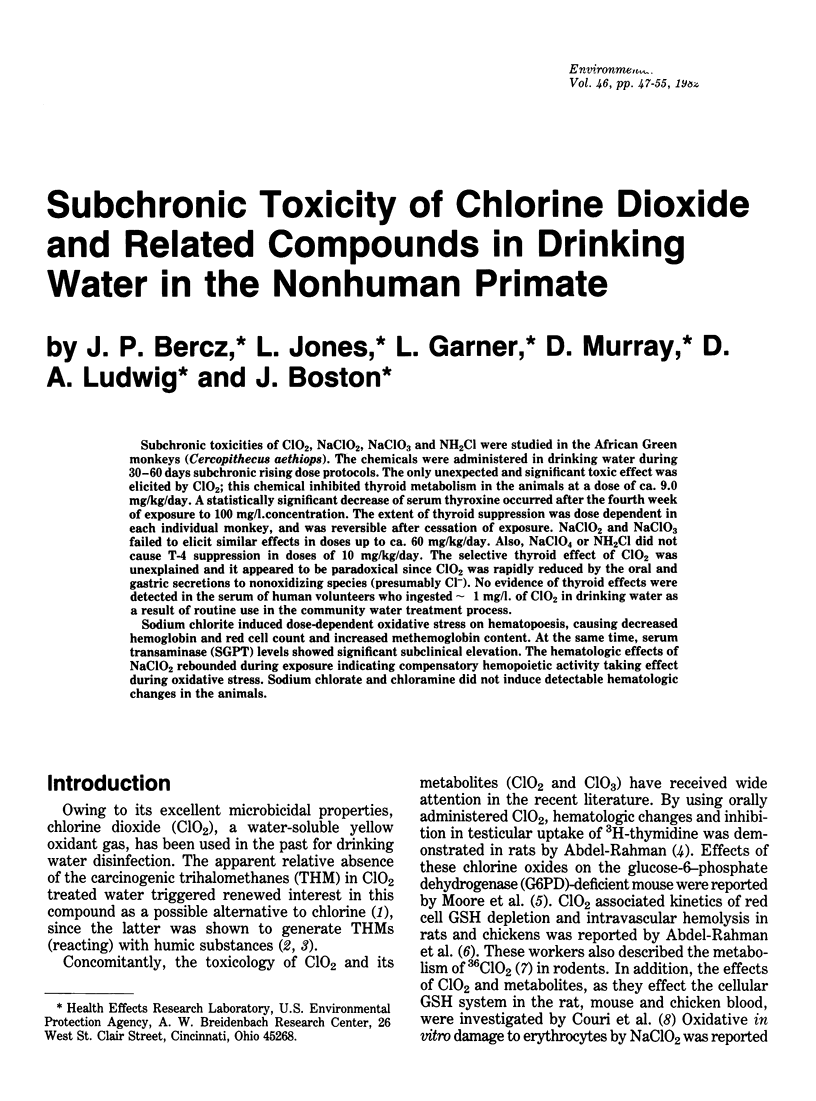
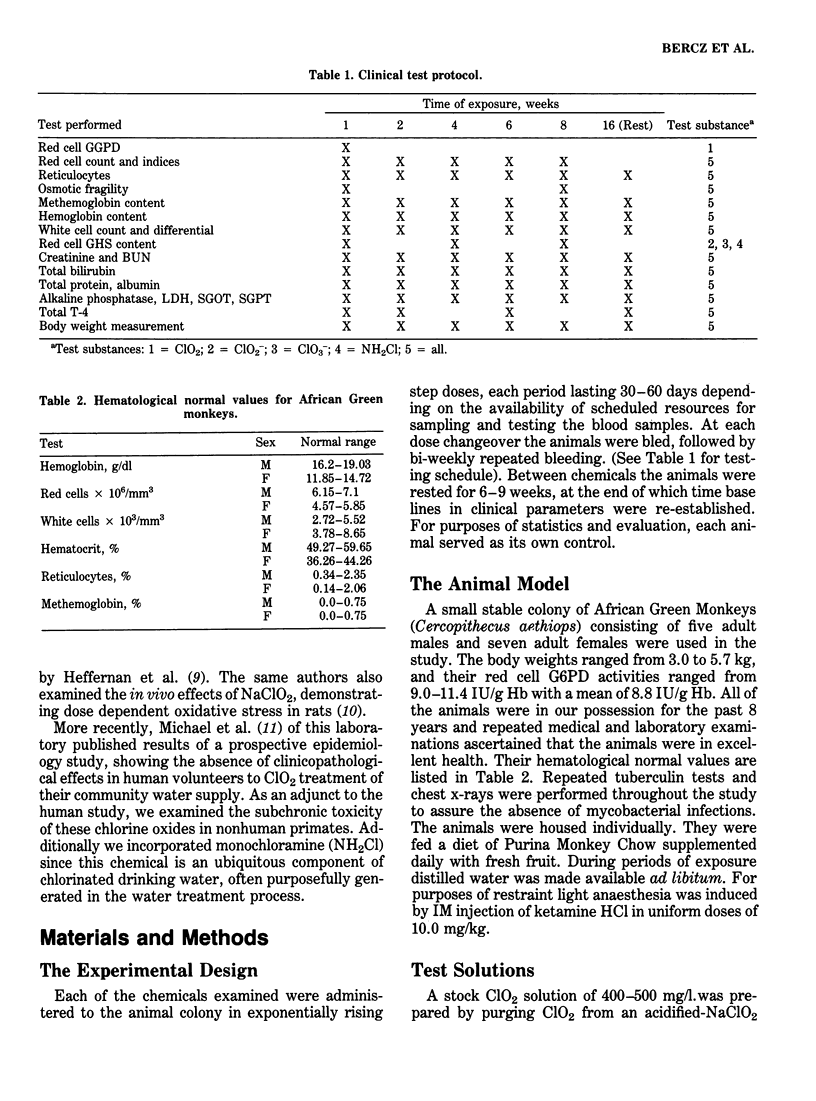
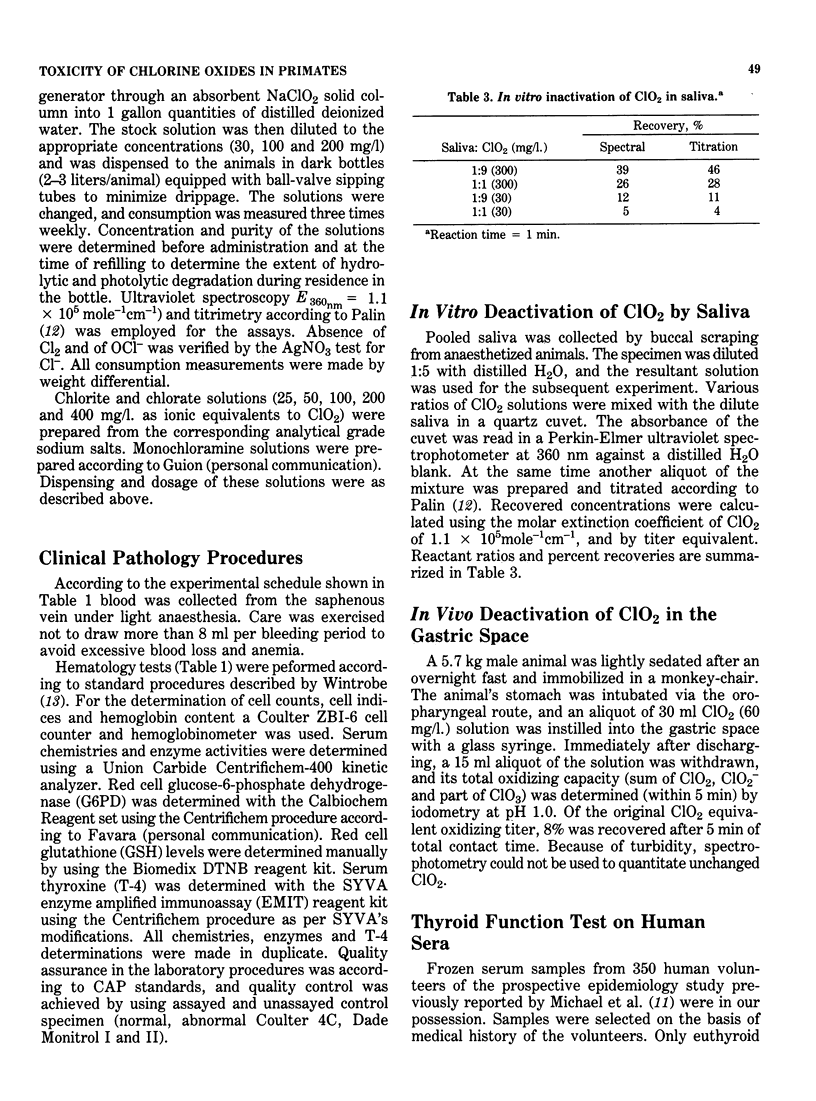
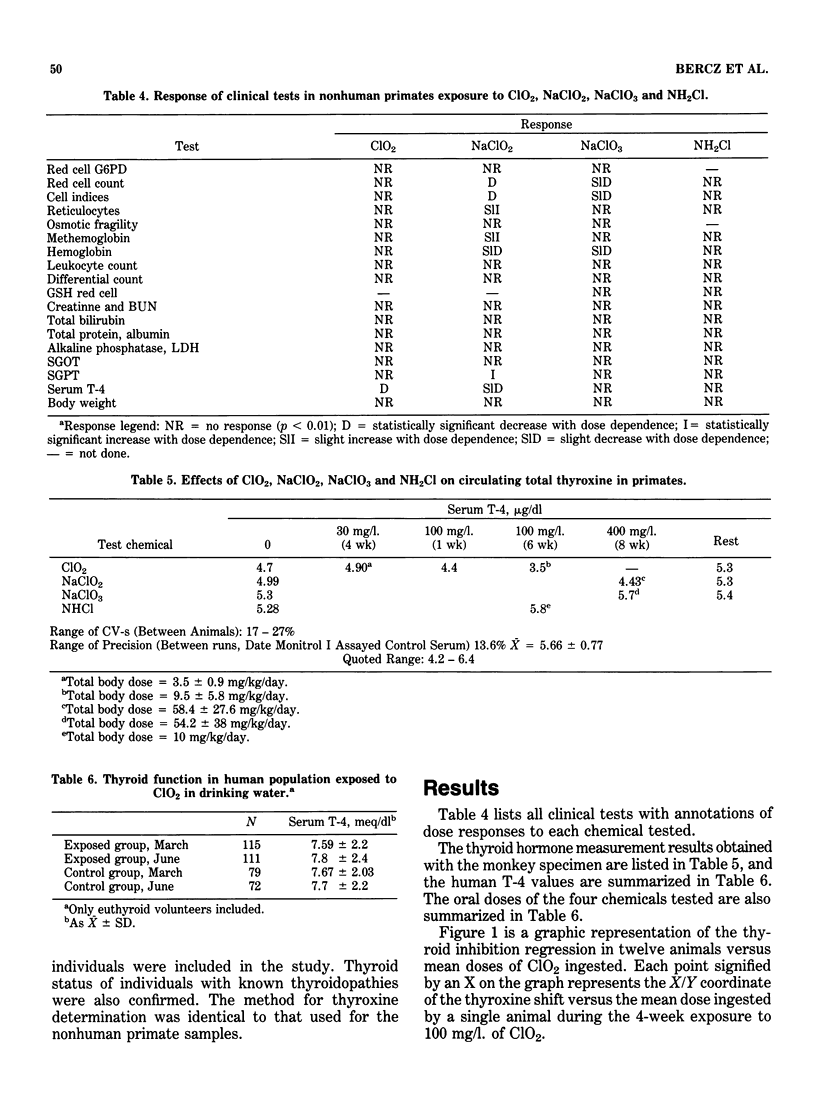
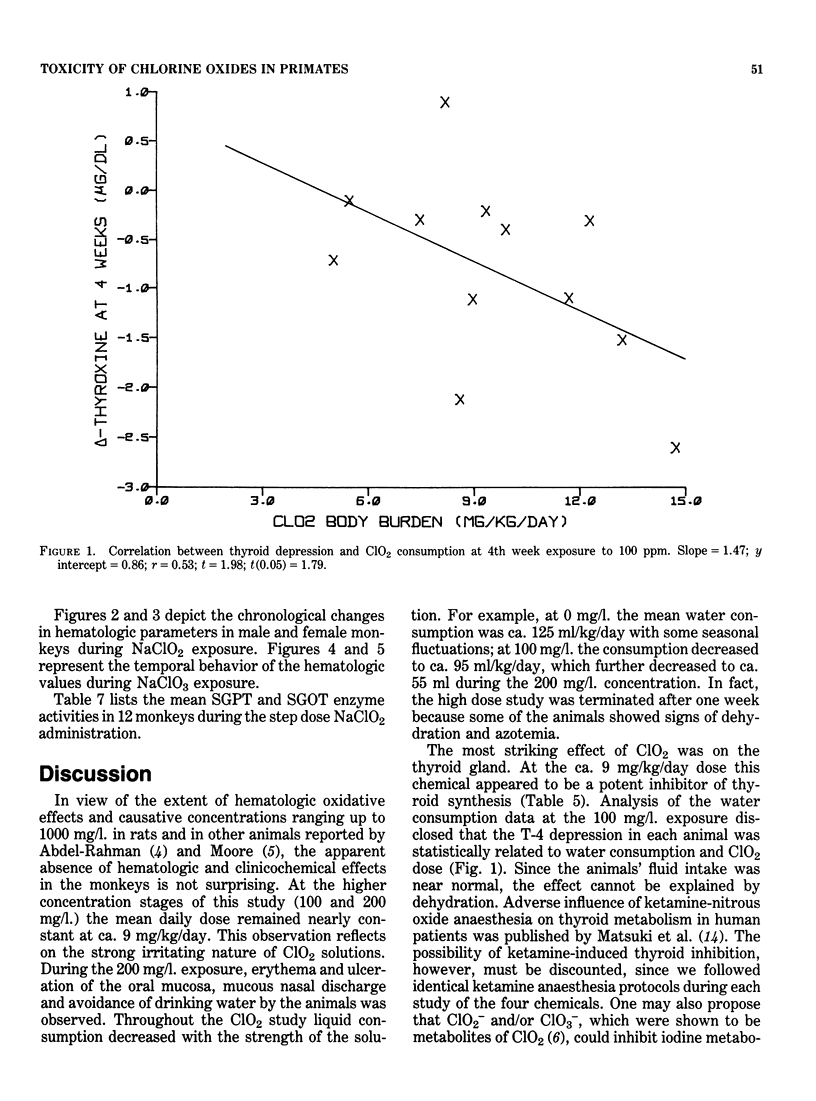
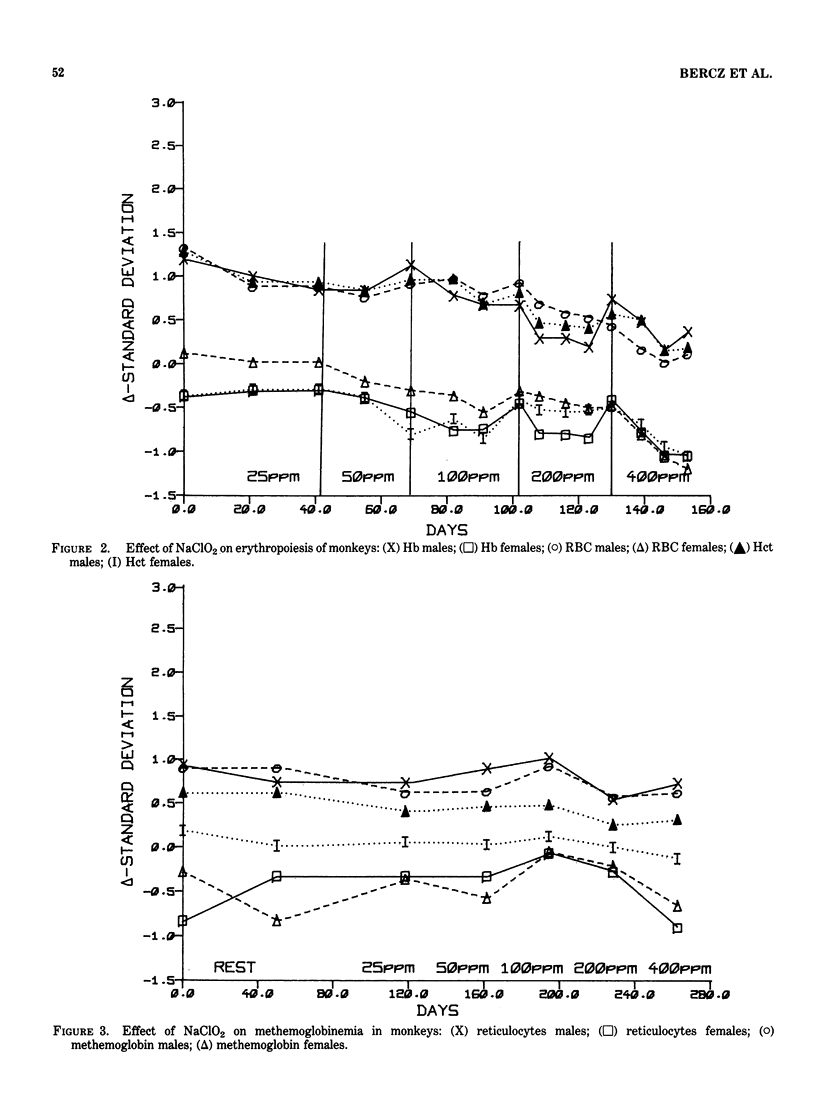
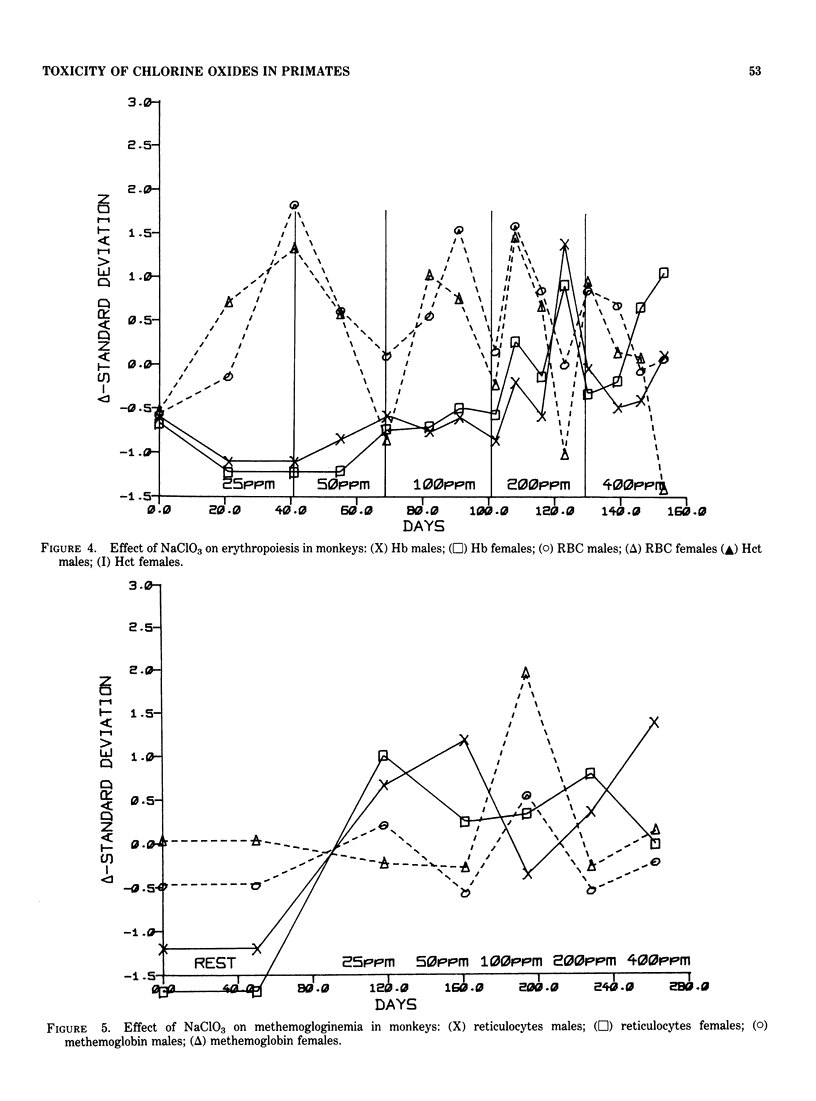
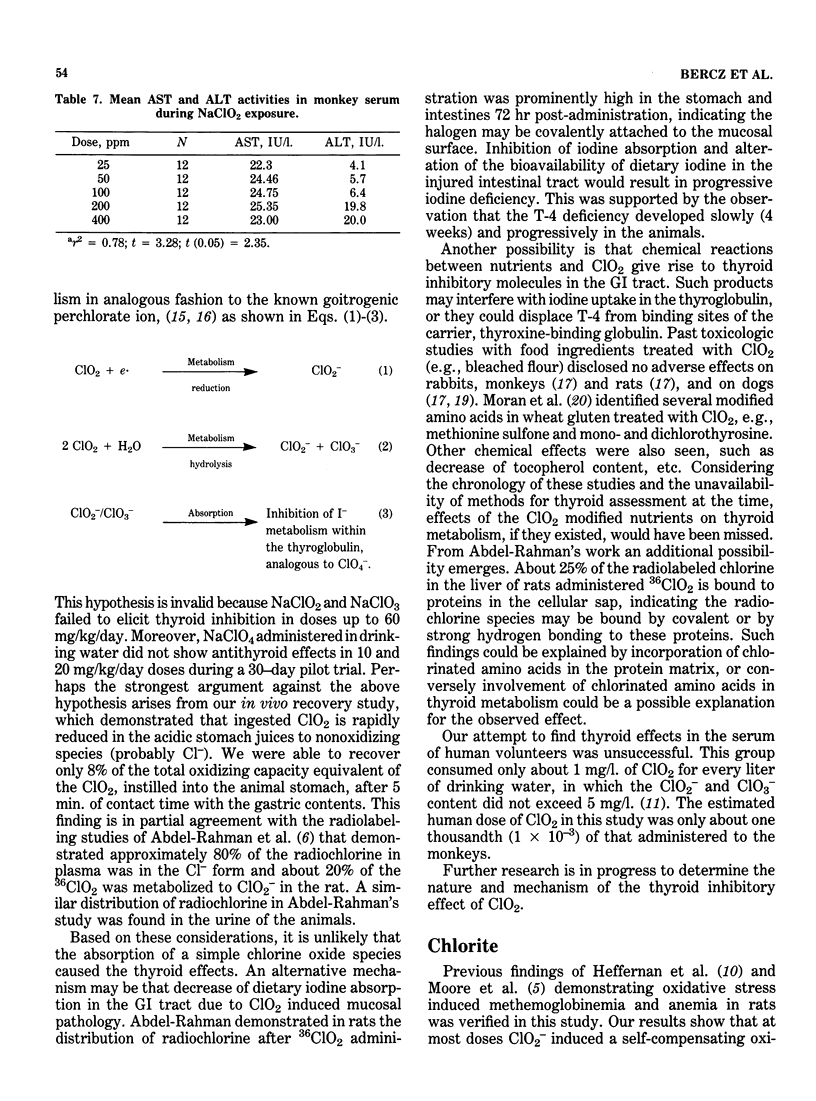
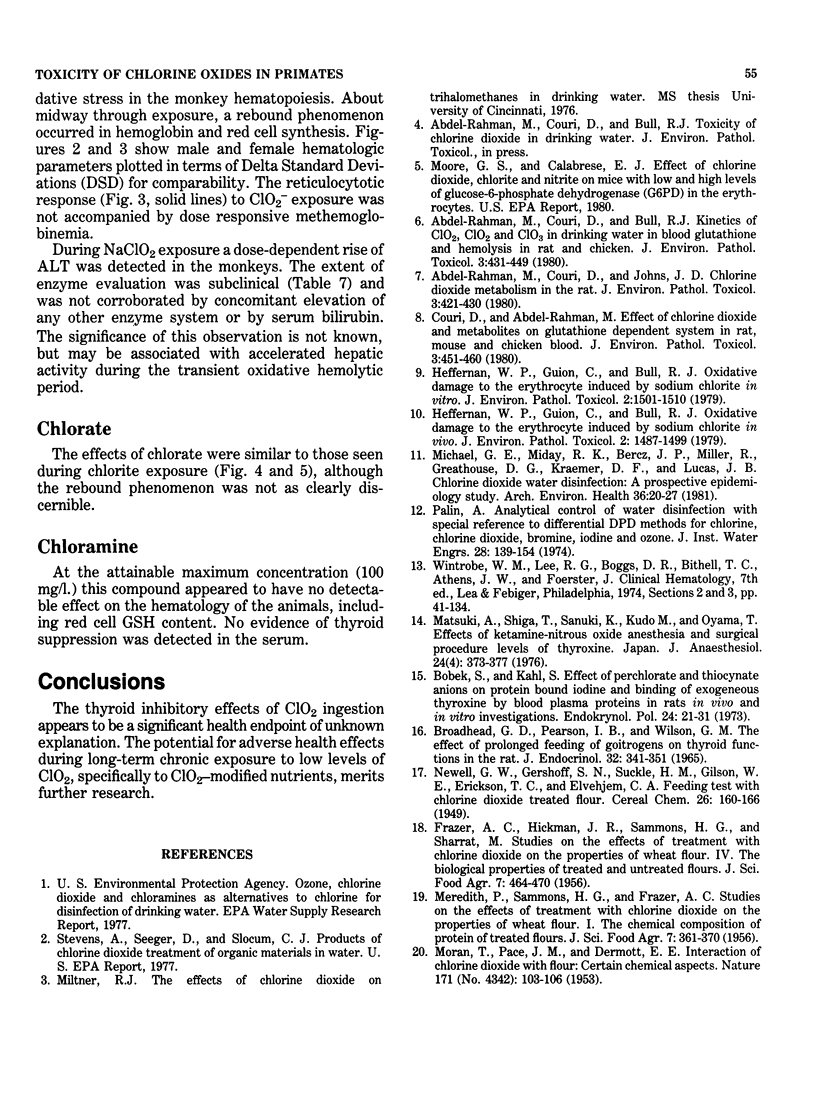
Selected References
These references are in PubMed. This may not be the complete list of references from this article.
- Abdel-Rahman M. S., Couri D., Bull R. J. Kinetics of Cl02 and effects of Cl02, Cl02-, and Cl03- in drinking water on blood glutathione and hemolysis in rat and chicken. J Environ Pathol Toxicol. 1979 Dec;3(1-2):431–449. [PubMed] [Google Scholar]
- Abdel-Rahman M. S., Couri D., Jones J. D. Chlorine dioxide metabolism in rat. J Environ Pathol Toxicol. 1979 Dec;3(1-2):421–430. [PubMed] [Google Scholar]
- BROADHEAD G. D., PEARSON I. B., WILSON G. M. THE EFFECT OF PROLONGED FEEDING OF GOITROGENS ON THYROID FUNCTION IN RATS. J Endocrinol. 1965 Jul;32:341–351. doi: 10.1677/joe.0.0320341. [DOI] [PubMed] [Google Scholar]
- Couri D., Abdel-Rahman M. S. Effect of chlorine dioxide and metabolites on glutathione dependent system in rat, mouse and chicken blood. J Environ Pathol Toxicol. 1979 Dec;3(1-2):451–460. [PubMed] [Google Scholar]
- Heffernan W. P., Guion C., Bull R. J. Oxidative damage to the erythrocyte induced by sodium chlorite, in vitro. J Environ Pathol Toxicol. 1979 Jul-Aug;2(6):1501–1510. [PubMed] [Google Scholar]
- Heffernan W. P., Guion C., Bull R. J. Oxidative damage to the erythrocyte induced by sodium chlorite, in vivo. J Environ Pathol Toxicol. 1979 Jul-Aug;2(6):1487–1499. [PubMed] [Google Scholar]
- MORAN T., PACE J., MCDERMOTT E. E. Interaction of chlorine dioxide with flour: certain aspects. Nature. 1953 Jan 17;171(4342):103–106. doi: 10.1038/171103a0. [DOI] [PubMed] [Google Scholar]
- Michael G. E., Miday R. K., Bercz J. P., Miller R. G., Greathouse D. G., Kraemer D. F., Lucas J. B. Chlorine dioxide water disinfection: a prospective epidemiology study. Arch Environ Health. 1981 Jan-Feb;36(1):20–27. doi: 10.1080/00039896.1981.10667601. [DOI] [PubMed] [Google Scholar]


